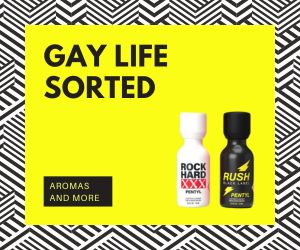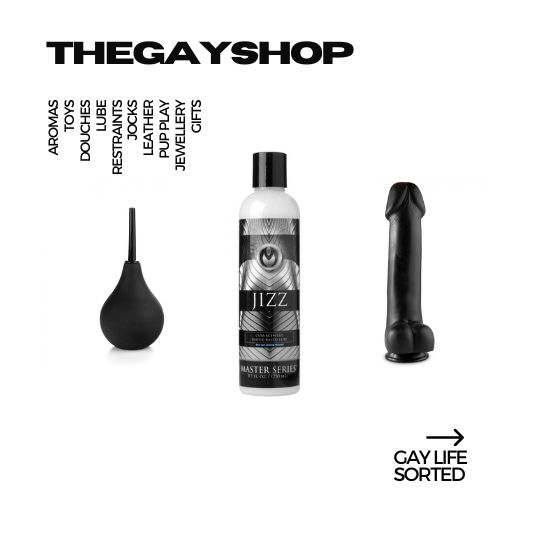Vices, innately immoral or simply unaccepted activities, can range greatly from the outright degrading to the purely inconvenient. The difference? How it impacts us personally as well as the perception of others. But when does a vice become more than just ‘naughty’ and turns into something actually detrimental and destructive?
In collaboration with PACE, a London-based charity that promotes the health and wellbeing of LGBT people, I will be looking at common vices and the negative impact these can have (if unregulated) on us all.
Gambling, overuse of profanity, habitual lateness or the ‘picking’ of various orifices are all common vices; so too is noisy chewing (especially tobacco or gum), staring at desirable people and over-splurging on shopping, just to name a few. So what is your vice? Smoking? Drinking? Drugs? Excessive dieting, gyming or kinky sex?
Research highlights that there is a disproportionality of alcohol abuse amongst lesbian and bisexual women and body dysmorphia amongst gay and bisexual men. As a community, we are seen as especially prone to these and other vices. One argument is that legislation and policy can impact on LGBT (Lesbian, gay, bisexual and transgender) mental health associated with a dependency on certain activities or habits.
One study found a higher incidence of mental health problems among LGB populations who lived in the American States whose policies discriminated based on sexual orientation (1). Despite UK policies which seek to address the inequalities which LGBT people continue to experience, on-going discrimination and prejudice is bound to have a negative impact, manifested through health implications, or a reliance on certain vices.
Research has suggested that there seems to be a higher risk of substance use dependency associated with minority sexual orientation, but especially among homosexually experienced heterosexuals and bisexual women(2). Research using large population-based samples has indeed consistently demonstrated a higher frequency and intensity of alcohol use amongst lesbian and bisexual women in ‘western’ industrialised societies (3).
It is important to recognise that some factors that may appear to bolster resilience, like socialising with other lesbians in gay venues, therefore enhancing a sense of belonging and integration, may also act as a risk, as it exposes individuals to the temptation to drink (4) .
Looking at any gay magazine or scanning TheGayUK website it is clear to see that beauty and physical beauty is important, valued. Body image is widely agreed as especially pertinent to the gay male community. Muscle dysmorphia (MD) or ‘a preoccupation with a misperception that muscles in general are small despite sufficient muscularity (5) can lead to people engaging in body change behaviours, such as dieting, binging and purging, excessive exercise and the use of performance and body enhancing drugs including anabolic androgenic steroids (AAS) (6) Prolonged use of AAS in particular can pose potentially serious mental and physical health risks (7). One study has found that compared to their heterosexual counterparts, gay men reported dieting more, being more fearful of becoming obese, and were more dissatisfied with their bodies generally as well as with their muscularity (8). They were also more likely to hold distorted beliefs about the importance of having an ideal physique.
These are two examples whereby the LGB community is affected by drinking and excessive dieting. There are several reasons why LGB people may employ these – and other – vices:
•Defiance – to overcome a sense of shame caused by homophobia (9); however, it has also been described as possibly creating vulnerability thus increasing risk of self-destructive behaviours (10).
•Need for acceptance and connection with others – socialising and wider support for sexuality related issues is important in promoting mental health among LGB youth.
•Personality factors – self-criticising tendencies, personal insecurity, perfectionism and obsessive compulsive disorders (11).
•Heightened aesthetic sensitivity and over-valuation of physical appearance – individuals with Body Dysmorphia Disorder (BDD) have been reported to have a more critical eye and greater appreciation of aesthetics especially when evaluating their own appearance (12).
•Dealing with loneliness and poor self-esteem (13).
•A fear of rejection – excessive body image concerns are associated with fear of rejection for one’s appearance(14).
•Challenge experiences of bullying – experiencing negative comments in childhood is also a predictor of poor self esteem in adulthood (15).
•Shame, internalised homophobia and the need for validation (16).
•Overcoming pressure to conform to culturally constructed ideals (17) .
Do you know why you have your vices? Does the above resonate with you? These theories hopefully provide food for thought and highlight some reasons as to why we, as a community, are disproportionately engaged in a variety of vices, some of which can have lasting, negative effects on us mentally and physically. Although it is generally now regarded that same sex attraction is compatible with psychological good health (18) . LGB people have been found to be at higher risk of mental disorders, suicidal ideation, substance misuse, and deliberate self-harm when compared to heterosexual people(19).
However, research also indicates that being LGB (or having a transgender identity) is not in itself associated with mental distress and increased rates of mental illness. Indeed it is the negative impact of transphobic, homophobic and heterosexist cultural norms which can spur the discrimination, bullying, marginalisation and stigmatisation of LGBT people, causing ‘minority stress’ (20). So, are your vices an escape? Are you trying to compensate for societal or other rejections? Are these vices simply a bit naughty or something more?
For more information visithttp://www.pacehealth.org.uk/services
1) Hatzenbuehler et al, 2010
2) Cochran and Mays, 2009
3) King et al., 2008; Rosario, 2008
4) Gruskin, 2006
5) Pope et al., 1997, cited in Maida and Armstrong, 2005, p.75
6) Grieve, 2009 citing Olivardia 2001
7) Thiblin and Petersson, 2005
8) Kaminski et al., 2005
9) McDermott et al., 2008
10) Amadio, 2006
11) Pavan et al., 2008, p.4741
12) Lambrou et al., 2011
13) Chaney, 2008
14) Calogero et al., 2010
15) Wolke and Sapouna, 2008
16) Downs, 2005
17) Blond, 2008; Grieve, 2007 cited by Grieve 2009
18) King, 2004; McFarlane, 1998
19) King et al., 2008
20) Eisenberg and Wechsler, 2003; Meyer, 2003


